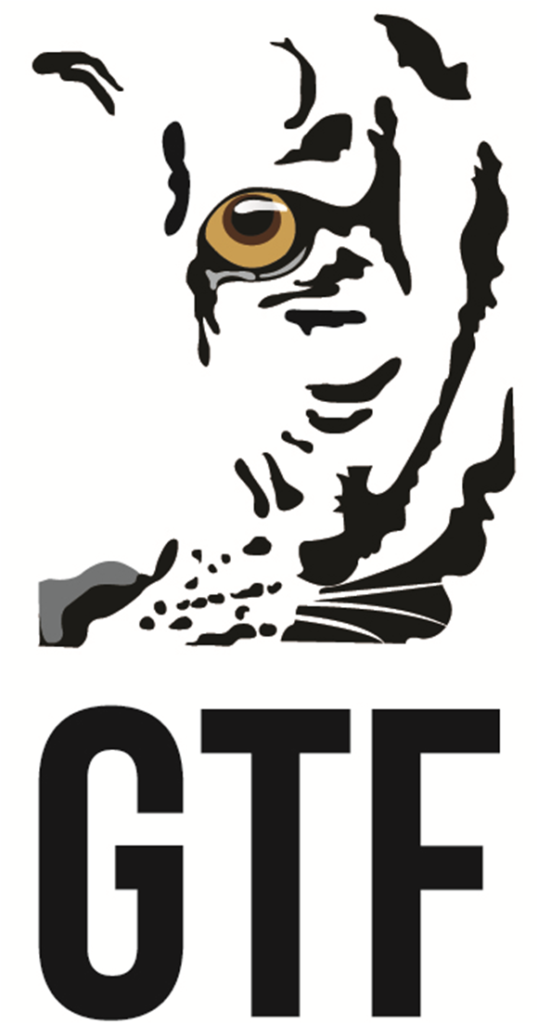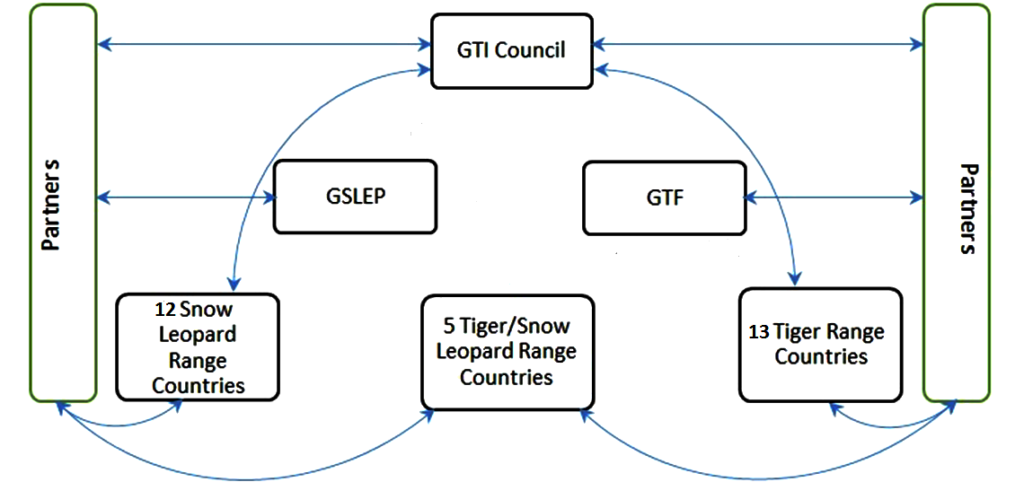Wild tigers (Panthera tigris) have for centuries occupied a very special place in the nature and culture of Asia. These magnificent big cats sit at the top of the ecological pyramid in vast Asian forest landscapes.
The presence of viable populations of wild tigers is an indicator of the integrity, sustainability, and health
of larger ecosystems.
However, wild tigers are on the brink of extinction, with only about 3,600 to 3,900 surviving today, scattered among 13 Asian Tiger Range Countries (TRCs): Bangladesh, Bhutan, Cambodia, China, India, Indonesia, Lao PDR, Malaysia, Myanmar, Nepal, Russian Federation, Thailand, and Vietnam.
Thus there is a need for the conservation of tigers. Many steps have been taken at the global level for the conservation of tigers.
For efforts in India visit https://fotisedu.com/tiger-indian-efforts-to-conserve-the-big-cat/
Project Tiger – An Assessment https://fotisedu.com/project-tiger-an-assessment/
Global Tiger Forum
Global Tiger Forum is an international intergovernmental body exclusively set up for the conservation of tigers in the wild in the range countries. https://globaltigerforum.org/

Who are the members of GTF?
Out of the 13 tiger range countries, seven are currently members of GTF: Bangladesh, Bhutan, Cambodia, India, Myanmar, Nepal and Vietnam besides non-tiger range country U.K.
Where is the secretariat of GTF?
The secretariat is based in New Delhi, India.
What is the goal of GTF?
GTF’s goal is to highlight the rationale for tiger preservation and provide leadership and a common approach throughout the world in order to safeguard the survival of the tiger, its prey, and its habitat.
Asia Ministerial Conference on tiger conservation
The Asia Ministerial Conference (AMC) is a meeting of thirteen tiger range countries to discuss the plight and plans for conservation of the wild Tiger population.
The goal of the conference is to get each country and partner to commit to helping the wild tiger population.
How many Asia Ministerial Conference on tiger conservation have been held so far?
The 1st ASIA Ministerial Conference (AMC) was held in Thailand, 2010.
The 2nd ASIA Ministerial Conference (AMC) was held in Thimphu, 2010.
The 3rd Asia Ministerial Conference on Tiger Conservation was held in New Delhi, India, 2016.
The 4th Asia Ministerial Conference on tiger conservation was held in Malaysia , 2022.
Global Tiger Recovery Programme
The GTRP was developed in 2010 , with the shared goal of doubling the number of wild tigers globally by 2022 through actions to:
(i) effectively manage, preserve, protect, and enhance tiger habitats;
(ii) eradicate poaching,smuggling, and illegal trade of tigers, their parts,and derivatives;
(iii) cooperate in transboundary landscape management and in combating illegal trade;
(iv) engage with indigenous and local communities;
(v) increase the effectiveness of tiger and habitat management; and
(vi) restore tigers to their former range.
In the St. Petersburg Declaration on Tiger Conservation endorsed at the International Tiger Forum, Tiger Range Countries adopted the Global Tiger Recovery Program (GTRP).
The Global Tiger Recovery Program (GTRP, 2010) and the Global Snow Leopard and Ecosystem Protection Program (GSLEP, 2013) unite 20 governments and their partners in high-profile collective action to conserve these apex predators and their landscapes in Asia.
These initiatives are based on political declarations (The St. Petersburg Declarations on Tiger Conservation and The Bishkek Declarations on Snow leopard) which are being implemented through long-term programs (Global Tiger Recovery Program and Global Snow Leopard and Ecosystem Protection Program). Both programs are implemented by range country governments and coordinated by respective program secretariats.
Conservation Assured | Tiger Standards (CA|TS)
CA|TS is a conservation tool that sets best practice and standards to manage target species, and encourages assessments to benchmark progress.
Tigers are the first species selected for the initiative.
It is a partnership of tiger range governments, inter-governmental agencies, institutions, NGOs and conservation organisations.
It is being adopted for use beyond tigers, including potentially jaguars, lions and freshwater dolphins.
World Wide Fund for Nature is helping tiger range countries to implement CA|TS.
St. Petersburg Declarations on Tiger Conservation
During the St. Petersburg declaration in 2010, tiger range countries had resolved to double tiger numbers across their range by 2022.
In the 2010 St. Petersburg Declaration, the countries agreed to a Global Tiger Recovery Program.
Global Tiger Initiative (GTI)
It was launched in 2008 as a global alliance of governments, international organizations, civil society, the
conservation and scientific communities and the private sector, with the aim of working together to save wild tigers from extinction.
In 2013, the scope was broadened to include Snow Leopards.
GTI Council
The GTI Council is currently operating from three cities, i.e. Washington DC, New Delhi (GTF secretariat) and Bishkek (GSLEP secretariat).
Key roles of the GTI Council may include but not be limited to:
1 . Generating Political will and advocating for conservation;
2 . Coordinating global support to the programs;
3 . Mobilizing resources;
4 . Enabling convergence and connectivity;
5 . Building alliances and publicity .

GTIC has been recreated with two arms for implementation- Global Tiger Forum (GTF) for tigers, in Delhi, and Global Snow Leopard Environmental Plan (GSLEP) for snow leopards at Bishkek.
TX2
TX2 stands for “Tigers times two”, signaling the goal set by 13 tiger range countries in 2010 to double population of wild tigers by 2022.
TX2 Tiger Conservation Awards (TTCA)
TX2 is the global award which was set up in 2010 in St. Petersburg Tiger Summit by international organizations working for tiger conservation like WWF, UNDP, IUCN, Global Tiger Fund, CATS and The Lion’s Share.
TTCA are given in two categories:
1 . Tiger Conservation Excellence Award:
Award recognises a site that has achieved excellence in two or more of five themes:
a. Tiger and prey population monitoring and research;
b. effective site management;
c . enhanced law enforcement and protection;
d. community-based conservation,
e. habitat and prey management.
2. TX2 Award:
This award is given for efforts to increase tiger population and includes a financial grant to assist ongoing conservation.

Very informative
Excellent work 👍👍👍
Super👌👌👌
Very informative
Nice work